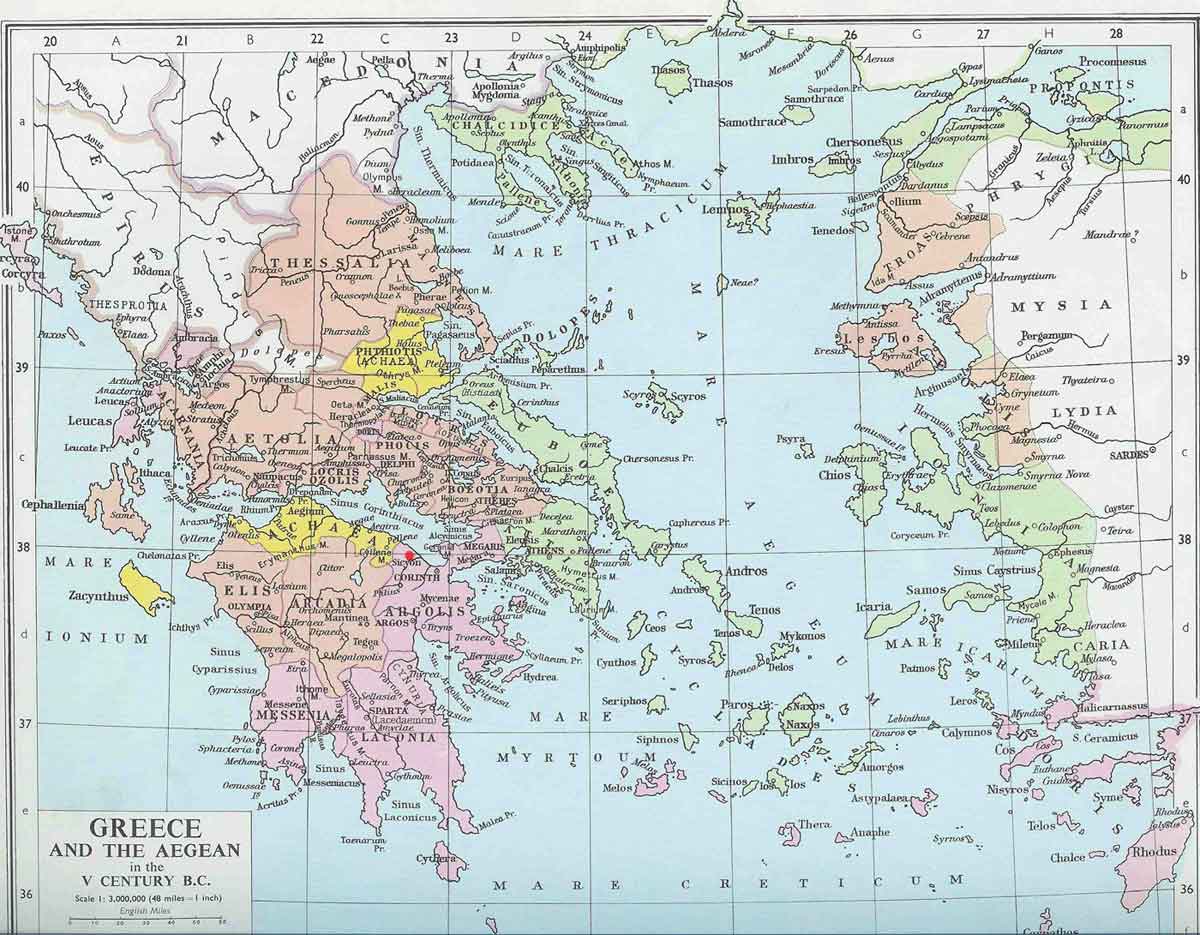Ancient Greek city in the northern Peloponnese about 11 miles (18 km) northwest of Corinth. Inhabited in Mycenaean times and later invaded by Dorians, Sicyon was subject to Argos for several centuries.In the 7th century BC, Sicyonian independence was established by non-Dorian tyrants, the Orthagorids. Under the Orthagorid ruler Cleisthenes (grandfather of the Athenian statesman of the same name), in the 6th century, the city gained its greatest power.
After the fall of the tyranny, Sicyon joined the Peloponnesian League and remained a loyal ally of Sparta for about a century and a half; its plentiful coinage attests to its prosperity in this period. Theban intervention in 369 or 368 led to intermittent civil strife and tyrannies. During the 4th century BC, Sicyon was celebrated for its school of painters and sculptors, which included the master Lysippus.
Aratus, the most distinguished statesman of Sicyon, freed it from a tyranny (251) and brought it into the Achaean League, in which it played a leading role until his death (213). (Encyclopędia Britannica Online.)
